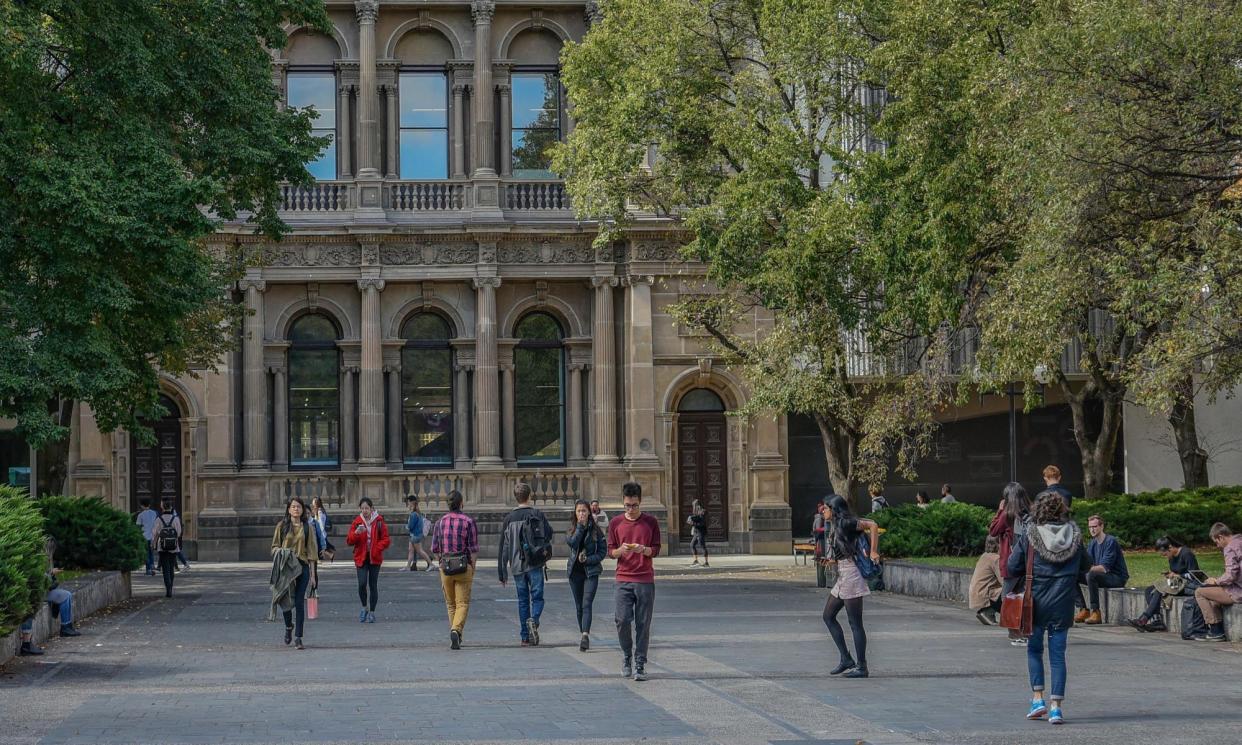Australia’s $50,000 arts degree is here – putting university fees on par with the UK and US

There was a time when would-be poets, historians and writers could expect to pay off an arts degree at an Australian university within the decade, if they were able to find stable employment. Fast forward to now and they may die with their debt.
Arts degrees in Australia are set to cost more than $50,000 for the first time, with experts warning some students will never be able to pay off their debts under the current system.
The new figure places Australia on par with the UK and public colleges in the US, five years on from the widely condemned jobs ready graduates (JRG) scheme.
Data released by the Department of Education this month confirmed the student contribution for a range of degrees including society and culture, communications, law and economics would jump to $16,992 annually from 2025.
It’s about $650 higher than last year resulting from indexation, and more than $10,000 steeper for humanities courses than 2020, prior to the implementation of the Coalition’s policy.
The scheme, introduced by the Morrison government, reduced the overall government contribution to degrees from 58% to 52%, raising student contributions to 48%.
The JRG also increased fees for some courses, including humanities, to fund fee cuts in other courses as well as 39,000 extra university places by 2023.
It has been widely panned by the university sector, including the Group of Eight (Go8), Universities Australia, student bodies and academics.
The University Accord interim report said the scheme had failed and “needs to be redesigned before it causes long-term and entrenched damage to Australian higher education”, while its final report, released this January, called for “urgent remediation”.
Prior to the 2022 federal election, Labor was also scathing in its critique of JRG, with the then shadow education minister, Tanya Plibersek, calling it a “total fraud that doesn’t deserve backing from anyone with common sense or a conscience”.
The successive fee increases means it’s more than twice as costly to study in Australia than in Canada.
According to the higher education analytics firm Quacquarelli Symonds (QS), undergraduate humanities courses in Canada average C$5,542 (A$6,028) a year for domestic students, while in the UK all domestic courses are capped at £9,250 (A$17,900) annually.
University fees in the US vary, ranging from US$12,320 for public colleges to $50,000 a year at elite private ones.
Comparatively, a string of European countries including Austria, the Czech Republic, Denmark, Finland, Greece, Iceland, Luxembourg, Norway and Sweden offer free education for some or all courses.
The president of the University of Sydney’s Student Representative Council, Harrison Brennan, is midway through his politics and philosophy degree and already owes $33,000. He said it felt like Labor wanted to “prolong the attack on critical thinking”.
“There’s palpable anger among students who feel they’ve been cheated – forced to pay even more for an education that many in parliament received for free,” he said.
Asked in question time when the federal government would unwind the doubling of costs for affected courses, as was recommended in the accord, the education minister, Jason Clare, said reforms were “bigger than one budget”.
“We announced in the budget that we would establish an Australian Tertiary Education Commission (Atec) to steer reform here, and that will include the setting of course fees,” he said.
Andrew Norton, a professor in higher education policy at Australian National University, said the JRG was always going to be a “booby trap” for the next government, but a temporary fix was needed before the implementation of Atec.
Modelling undergone by Norton suggested arts graduates with median career earnings would never fully repay their debts under the current rates – even with low indexation.
“To change humanities fees in a budget-neutral way would require increasing fees for other courses and they’re reluctant to do that,” he said.
Norton suggested the old system – where a person’s capacity to pay determines what they are charged – was needed, but pointed out the Atec was not due to open until mid-2025.
“It’ll be 2026 before they can start looking at this and [by] 2027 at best it’ll be changed. That’s a whole new cycle through the system of students accumulating debts they can’t pay.”
Norton said under the Hecs/Help scheme it was “never intended” that someone with a normal income for their degree remained in debt until their death.
“The reality is for many the government won’t get money back anyway,” he said. “Having this debt hanging over people for their entire career isn’t sensible policy.”
The Greens deputy leader and higher education spokesperson, Mehreen Faruqi, said Labor’s unwillingness to scrap the fee hikes was exacerbating the student debt crisis.
“Soaring student debt is already locking people out of the housing market, crushing dreams of further study and stopping people from starting a family, and Labor is making things worse,” she said.
“With the Albanese government backing Morrison’s university fee hikes and student debt ballooning out of control, young people are telling me that they’re finding it harder and harder to tell Labor and the Liberals apart.”


